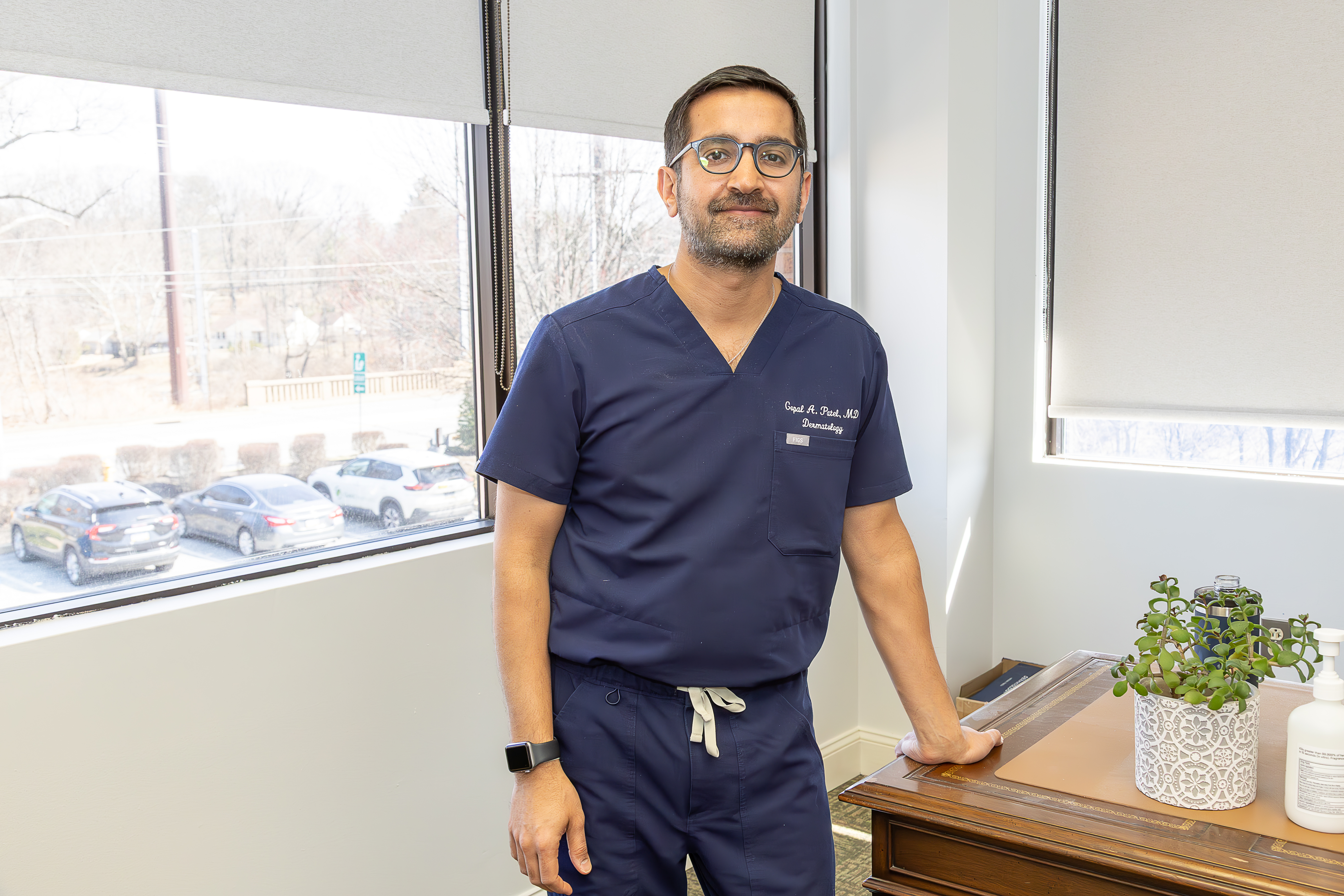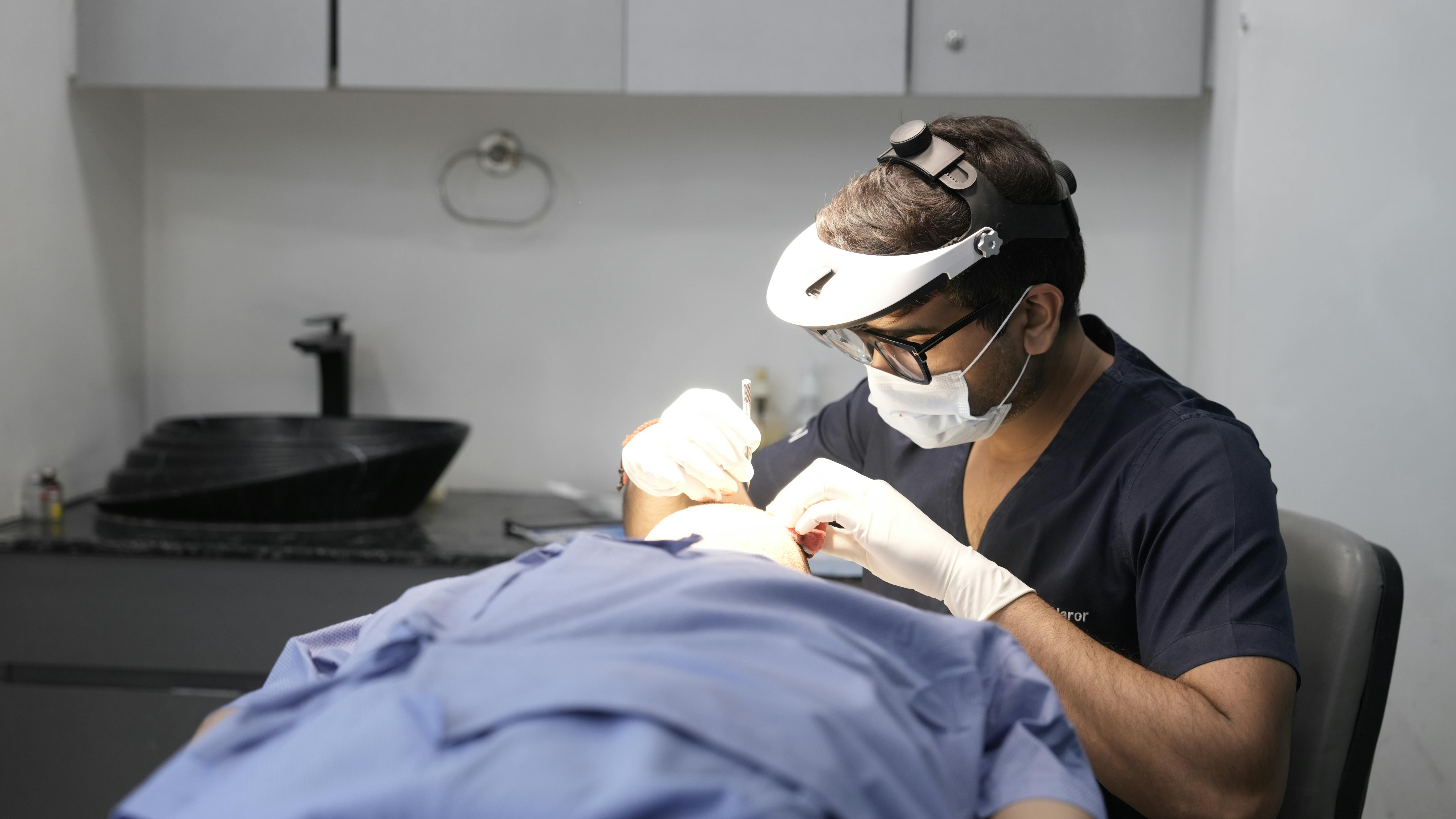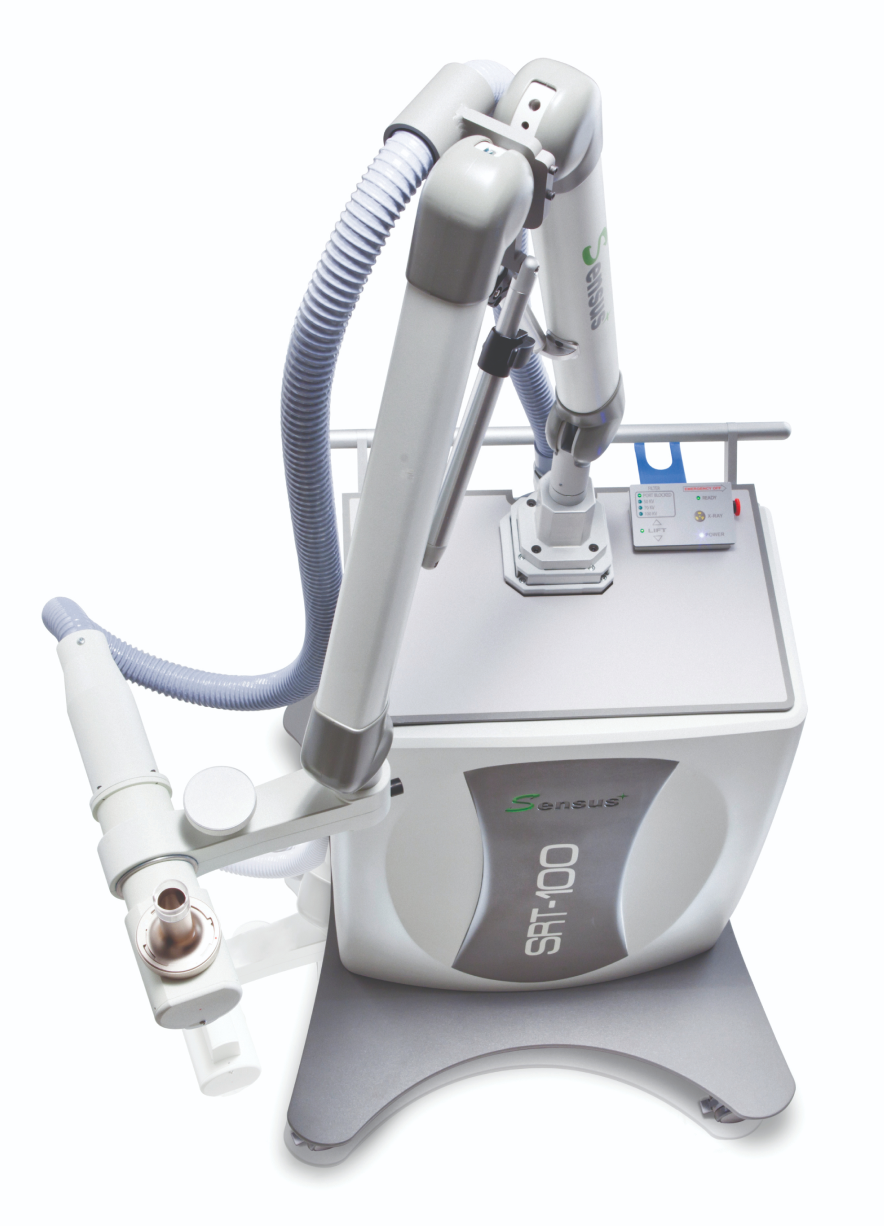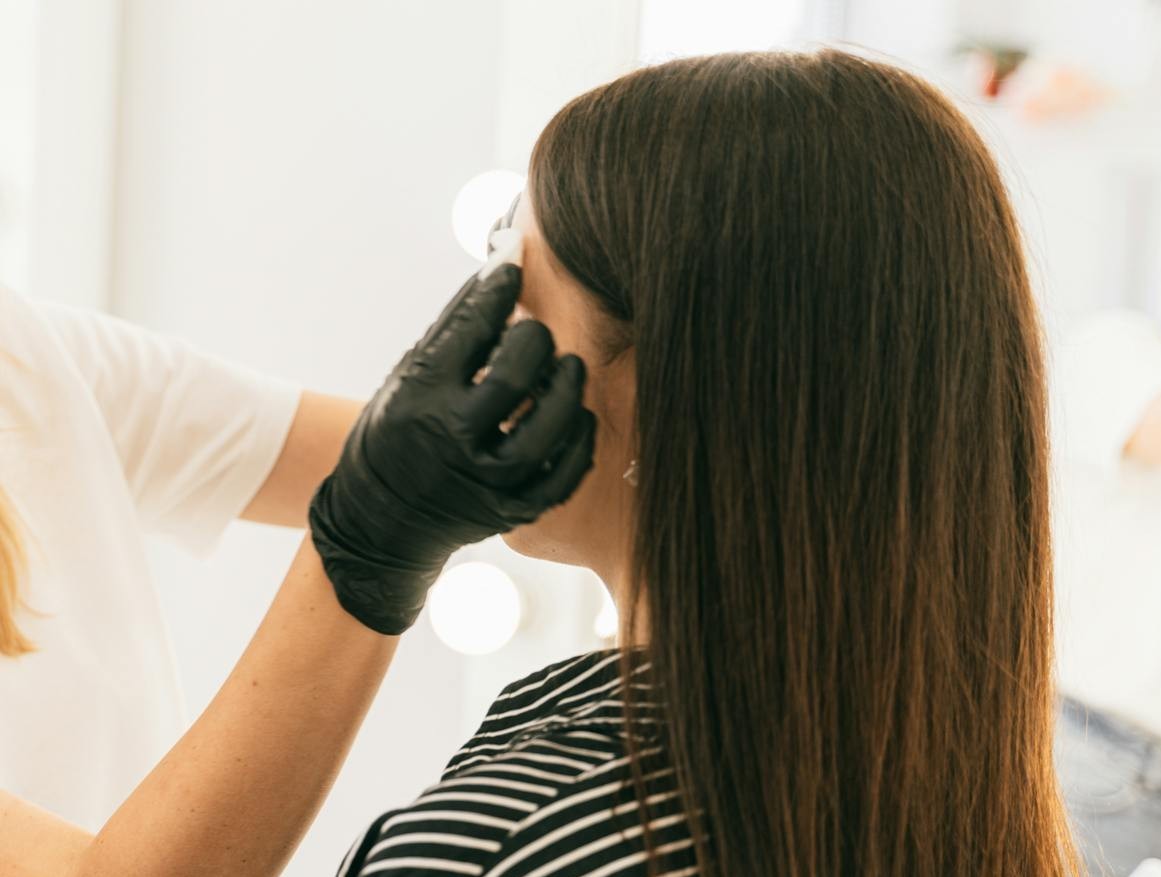Mohs Surgery or SRT? What Your Dermatologist Considers When Recommending Skin Cancer Treatment

By Dr. Patel, Board-Certified Dermatologist – Aesthetic Dermatology Associates, serving Paoli & Media, PA
When you’re diagnosed with skin cancer, one of the first questions that comes to mind is:
“What’s the best treatment for me?”
It’s completely normal to feel uncertain — especially if your dermatologist recommends multiple treatment options, like Mohs surgery or Superficial Radiation Therapy (SRT).
At Aesthetic Dermatology Associates, we understand that choosing the right approach can feel overwhelming. The truth is, your doctor’s recommendation isn’t random. It’s based on specific medical, anatomical, and personal factors designed to give you the best long-term outcome with the least disruption to your life.
Let’s walk through what we, as dermatologists, consider when recommending Mohs surgery versus radiation treatment for skin cancer — so you can feel informed, reassured, and confident in your care plan.
Understanding the Types of Skin Cancer
There are three major forms of skin cancer that dermatologists treat most frequently:
- Basal cell carcinoma (BCC): The most common type, usually slow-growing and highly treatable. It rarely spreads beyond the original site and responds exceptionally well to treatments such as Mohs surgery or Superficial Radiation Therapy (SRT).
- Squamous cell carcinoma (SCC): Can grow more quickly and occasionally spread if not treated early, but when caught in its early stages, it also carries an excellent prognosis. Treatments are highly effective, and recurrence rates are very low with proper follow-up.
- Melanoma: The least common but most serious of the three most well known forms of skin cancer, arising from pigment-producing cells called melanocytes. While melanoma requires prompt surgical removal, early detection dramatically improves outcomes — with five-year survival rates above 99% when caught at an early stage. Modern advances in targeted therapy and immunotherapy have also made later-stage melanomas far more manageable than in the past.
The good news is that nearly all skin cancers — including melanoma when detected early — are highly curable. Regular skin checks, quick evaluation of new or changing moles, and timely treatment make a life-changing difference.
Dr. Patel reminds patients:
“Hearing the word skin cancer can sound frightening, but today’s treatments are incredibly effective. With early diagnosis, we can almost always achieve excellent results and peace of mind.”
Mohs Surgery: The Gold Standard for Precision
Mohs micrographic surgery is often called the gold standard for treating many basal and squamous cell skin cancers — especially those in delicate or cosmetically sensitive areas such as the face, ears, nose, eyelids, scalp, hands, and genitals.
How Mohs Surgery Works
The area is numbed with local anesthesia.
The dermatologist surgically removes a thin layer around the cancerous tissue.
While you wait comfortably in the office, the tissue is examined under a microscope to check the margins — with the goal of ensuring every cancer cell has been removed.
If cancer cells are still present, another layer is removed and tested, repeating the process until the margins are clear.
Once the area is cancer-free, the wound is closed, often with fine sutures.
This method allows the surgeon to preserve as much healthy tissue as possible while achieving the highest possible cure rate — typically up to 99% for many non-melanoma skin cancers.

What to Expect After Mohs Surgery
Some visible scarring is expected, though careful suturing and good wound care minimize it.
Bruising, swelling, and mild pain may occur for a few days.
Infection risk is low but possible.
Recovery depends on wound size and location — often 1–3 weeks for full healing.
Dr. Patel emphasizes:
“Mohs surgery provides unmatched accuracy. We’re able to see exactly where the cancer ends and stop there — which is especially important for preserving appearance and function in areas like the nose, eyelids, and lips.”
Superficial Radiation Therapy (SRT): A Non-Surgical Alternative
For some patients, Superficial Radiation Therapy (SRT) offers a non-invasive, highly effective way to treat certain types of basal and squamous cell skin cancers — particularly on the head, neck, and other difficult-to-treat areas.

How Radiation For Skin Cancer Works
SRT uses low-energy, targeted radiation — similar in strength to a dental X-ray — to destroy cancer cells at the surface of the skin.
No cutting, bleeding, or stitches are involved.
The treatment is painless and performed entirely in-office.
The radiation is delivered over multiple short sessions (typically 2–3 times a week for 10–15 visits).
Modern ultrasound-guided SRT technology allows your dermatologist to precisely target the cancer cells while preserving the surrounding healthy tissue. This results in excellent cosmetic outcomes and high cure rates, comparable to surgery in select cases.
What to Expect During and After SRT
The treatment area may become slightly red or irritated midway through therapy as the body’s immune response activates.
Mild flaking or crusting is possible but temporary.
No downtime, stitches, or post-surgical wound care are required.
Several weeks after completing therapy, the treated skin usually returns to a smooth, clear appearance.
Dr. Patel explains:
“Patients often appreciate that SRT is entirely non-surgical. It’s especially helpful for those who want to avoid a scar or who aren’t good candidates for surgery due to age, medical conditions, or are on certain blood thinners.”
How Dermatologists Decide: Mohs or SRT?
The process begins with a clinical evaluation and skin biopsy. During your visit, your dermatologist examines the lesion visually and may use a dermatoscope, a handheld magnifying device that reveals surface and pigment details invisible to the naked eye. If the spot looks suspicious for basal cell or squamous cell carcinoma, a biopsy is performed — usually the same day.
Once the biopsy results return from the pathology lab (typically within 7–10 business days), your dermatologist reviews them carefully, looking at:
1. Type and Depth of Skin Cancer
Basal and squamous cell carcinomas may be treated with either Mohs or SRT, depending on depth.
Melanoma and deeper tumors always require surgical removal — SRT is not used for melanoma.
2. Location on the Body
Areas with high cosmetic or functional importance (face, ears, eyelids, lips, nose, hands, genitals) benefit from Mohs surgery for precision and tissue preservation, though some scarring is expected.
On the other hand, for difficult-to-repair areas, like the nose, ears, eyelids, lips or scalp, SRT may be ideal to avoid complex surgical closures and scarring.
3. Age and Overall Health
Older adults or patients with underlying medical conditions may prefer SRT due to its non-invasive nature and lack of anesthesia or sutures.
Younger, healthy patients often choose Mohs for definitive, one-time treatment.
4. Success Rates and Recurrence Prevention
Mohs surgery boasts cure rates up to 99% for primary basal and squamous cell carcinomas.
SRT has cure rates of 90–95%, depending on tumor type and location, with recent studies showing even higher cure rates using Image Guidance. This is the technique performed in our office.
Both offer long-term control when used appropriately and monitored with regular skin exams.
5. Cosmetic Outcome and Personal Preference
Patients who prioritize scar minimization may lean toward SRT for small, superficial cancers. Others prefer Mohs for its immediate confirmation of complete cancer removal in a single visit.

Timeline and Coordination of Care
From start to finish, the decision process usually takes one to two weeks, depending on lab turnaround time. Here’s a typical sequence:
- Initial Evaluation: The dermatologist examines the lesion, performs a biopsy, and photographs the area for records.
- Pathology Results (5–10 days): The dermatopathologist analyzes the tissue and sends a detailed report.
- Treatment Planning Visit: The dermatologist reviews the pathology, discusses available options (Mohs or SRT), and makes a personalized recommendation.
- Scheduling Treatment: Depending on the choice, the procedure or therapy can often begin within days after the plan is finalized.
For more complex or aggressive skin cancers, Dr. Patel may consult with a radiation oncologist (for SRT) or a Mohs surgeon to ensure the best multidisciplinary approach.
This process is deliberately thorough but efficient — designed to balance accuracy with minimal waiting time, so patients can move forward quickly with confidence and peace of mind.
To Summarize: Common Questions About Mohs Surgery and SRT Treatment for Skin Cancer
- How soon will I know which skin cancer treatment I need?
After your skin cancer biopsy, the pathology results usually arrive within 7 to 10 business days. Once your dermatologist reviews the report, you’ll be contacted promptly to discuss next steps. In most cases, the treatment plan — whether Mohs surgery or SRT — is finalized within one to two weeks of your biopsy, allowing you to start treatment quickly.
- Is Mohs surgery or SRT painful?
Both Mohs surgery and SRT treatment for skin cancer are designed to be as comfortable as possible. Mohs surgery is performed under local anesthesia, so you’ll feel only mild pressure but no pain during the procedure. SRT involves no needles, no cutting, and no anesthesia — patients typically describe it as completely painless, similar to a brief X-ray session.
- Will my treatment leave a scar?
Because Mohs surgery involves removing skin tissue, some degree of scarring is expected, though most heal beautifully with proper wound care. The advantage of Mohs is that it removes only the tissue necessary to clear the cancer, minimizing cosmetic impact. SRT, on the other hand, is a non-surgical treatment, so it typically leaves little to no visible scarring once the skin fully heals.
- How effective are Mohs and SRT treatments?
Both options are highly effective when used for the right type of skin cancer. Mohs surgery offers the highest possible cure rate — up to 99% for many basal and squamous cell carcinomas. SRT achieves cure rates between 90–95%, and is especially useful for patients who prefer a non-invasive alternative or have medical conditions that make surgery difficult.
- What happens after my treatment is finished?
After completing your Mohs surgery or SRT treatment, you’ll have regular follow-up visits to monitor healing and check for any signs of recurrence. Most patients heal completely within a few weeks, and long-term outlook is excellent. Dr. Patel encourages annual full-body skin exams to ensure ongoing skin health and early detection of any new or recurring lesions.
The Goal: Confidence Through Clarity
Understanding your dermatologist’s reasoning helps remove the mystery from the treatment process. At Aesthetic Dermatology Associates, we take the time to explain why a particular option is right for you — based on evidence, safety, and your personal goals.
Dr. Patel notes:
“No two skin cancers — or patients — are the same. My recommendation always comes down to one question: which treatment will give this person the best long-term outcome with the least disruption to their life?”
About the Author
Dr. Patel is a board-certified dermatologist specializing in medical, surgical, and cosmetic dermatology. As a Clinical Instructor at the VA Medical Center – University of Pennsylvania in Philadelphia, he mentors future dermatologists and has published research in leading medical journals.
At Aesthetic Dermatology Associates, with offices in Paoli and Media, Pennsylvania, Dr. Patel provides expert care for skin cancer diagnosis and treatment, including Mohs surgery and Superficial Radiation Therapy (SRT). His approach combines medical excellence with compassion and clear communication.
Related links
See Dr. Patel’s personal page on our website
Follow Dr. Patel on LinkedIn professional social network
Review Dr. Patel’s rating on US News Health website
Schedule a Skin Cancer Consultation in Paoli or Media, PA
If you’ve been diagnosed with basal or squamous cell carcinoma and want to explore whether Mohs surgery or SRT treatment is right for you, schedule a consultation with Dr. Patel at Aesthetic Dermatology Associates.
Our team will review your biopsy results, discuss your options in detail, and design a treatment plan that fits your medical needs and lifestyle.
Visit Our Locations
Media, PA
| Mon: | 7:30 am - 5:30 pm |
| Tue: | 8:00 am - 4:00 pm |
| Wed: | 7:30 am - 4:00 pm |
| Thu: | 7:30 am - 4:00 pm |
| Fri: | 7:30 am - 3:15 pm |
Paoli, PA
| Mon: | 8:00 AM - 4:30 PM |
| Tue: | 8:00 AM - 4:00 PM |
| Wed: | 8:00 AM - 5:30 PM |
| Thu: | 8:00 AM - 4:30 PM |
| Fri: | 8:00 AM - 5:00 PM |
Stay Informed with our Newsletter

Book Your Appointment Today!
Choose the option that works best for you:
Prefer to speak with someone? Call or text us:

Media, PA Office - Call or Text (610) 566-7300

Paoli, PA Office - Call or Text (610) 647-4161
Want to book online now? Select a provider below:
Note: Self-scheduling is currently available for Dr. Ko & Bridget Lolli. For all other providers, please call or text the office.